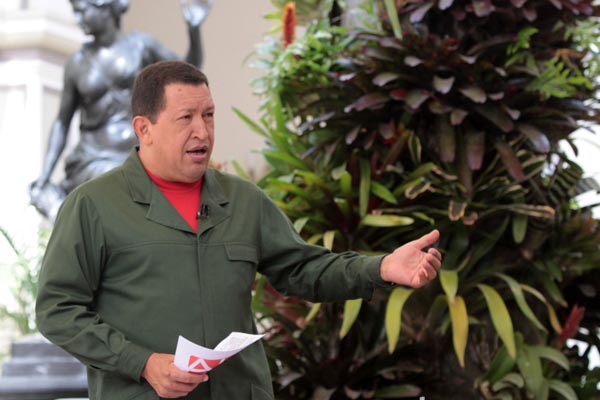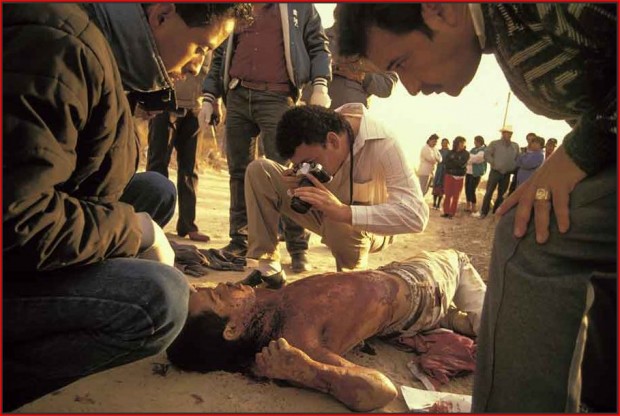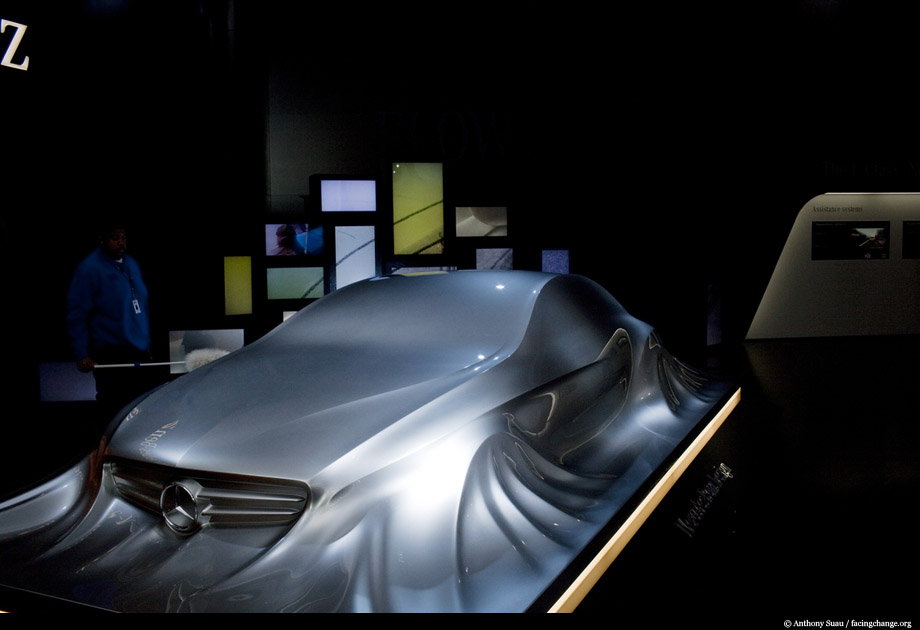Notes
Chavez: The Inverted Triangle

In this recent announcement from the presidential palace in Caracas on the anniversary of the coup attempt which failed to topple him eight years ago, President Hugo Chavez sent a particularly threatening message to his political opposition:
“If they go so far as to invent a coup d’etat, a terrorist act, by experts, from some very far away place, experts in car bombs, we have to be prepared, because the response will have to be radical … We will have to radicalize this revolution to the extreme. Soldier, people, prepare yourselves for this. I do not want it to happen.”
The background for such a dramatic statement is surprisingly peaceful, thanks to the sculpture of a naked female figure draped in the manner of the ancient Greeks. Chavez’s outstretched hand repeats that of the maiden behind — the very picture of a man engaged in reasonable debate. On the other side, Chavez is framed by exuberant vegetation, barely tamed by the hand of the presidential palace gardeners, as if nature itself were just waiting for his word to burst forth with wild, tropical energy.
A detail in the picture displays the same duality of reason mixed with extravagant rhetoric. The paper Chavez holds is printed with a white triangle on a red background, an inverted version of the crisp red triangle of his trademarked t-shirt framed by the lapels of his stylized field jacket. This symbol is reminiscent of a Masonic pyramid, suggesting that he holds evidence of a secret cabal working in diametrical opposition to the Revolution. Or that he is in possession of the key to some essential, esoteric knowledge, a code expressed in the implacable logic of geometry.
Hugo Chavez is a master at keeping his opponents guessing. The main question being, is there a method behind these messages or should they best be read as the signs of true madness?
Source: Diario El Periodiquito. Photographer unknown.


Reactions
Comments Powered by Disqus